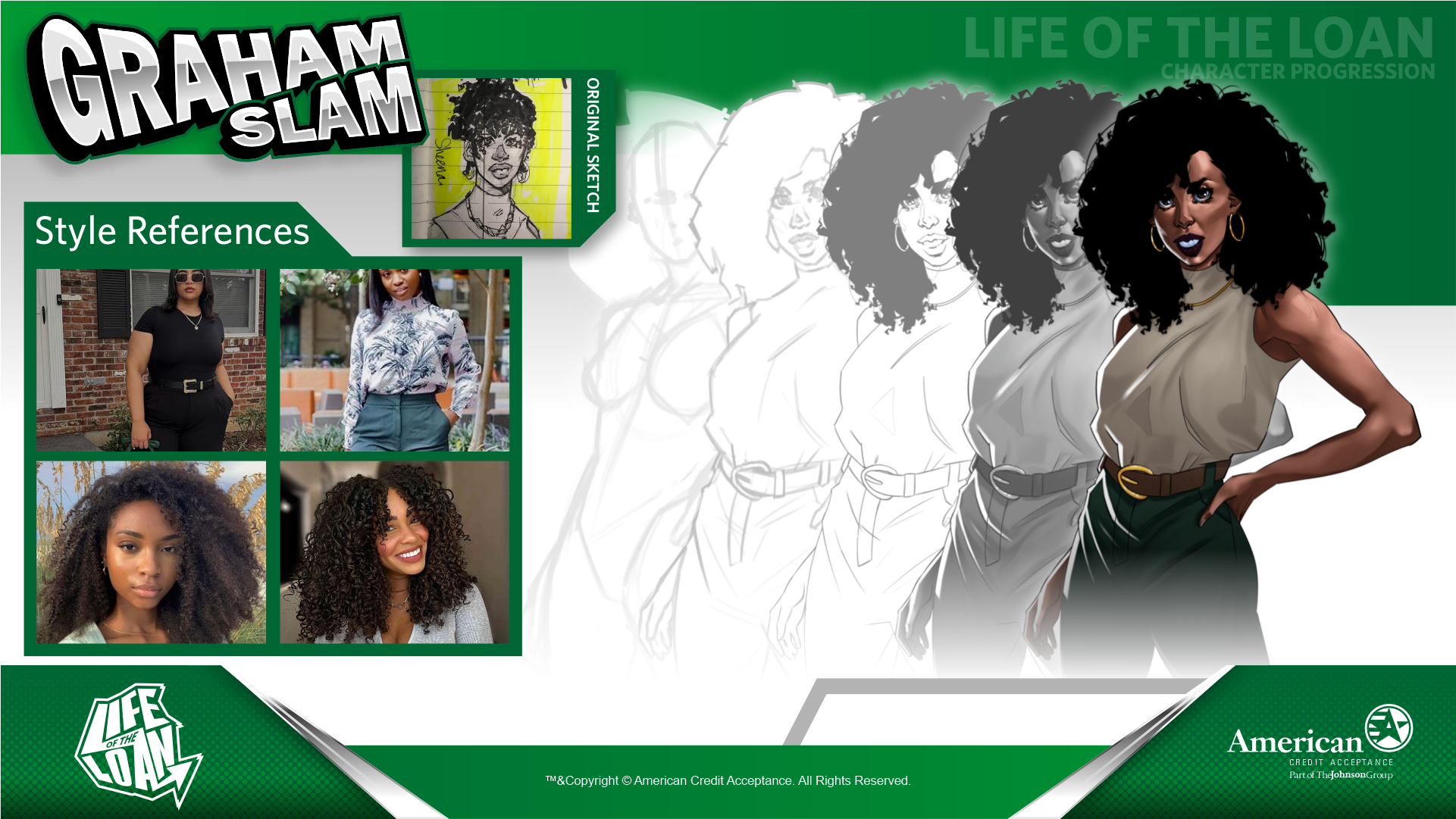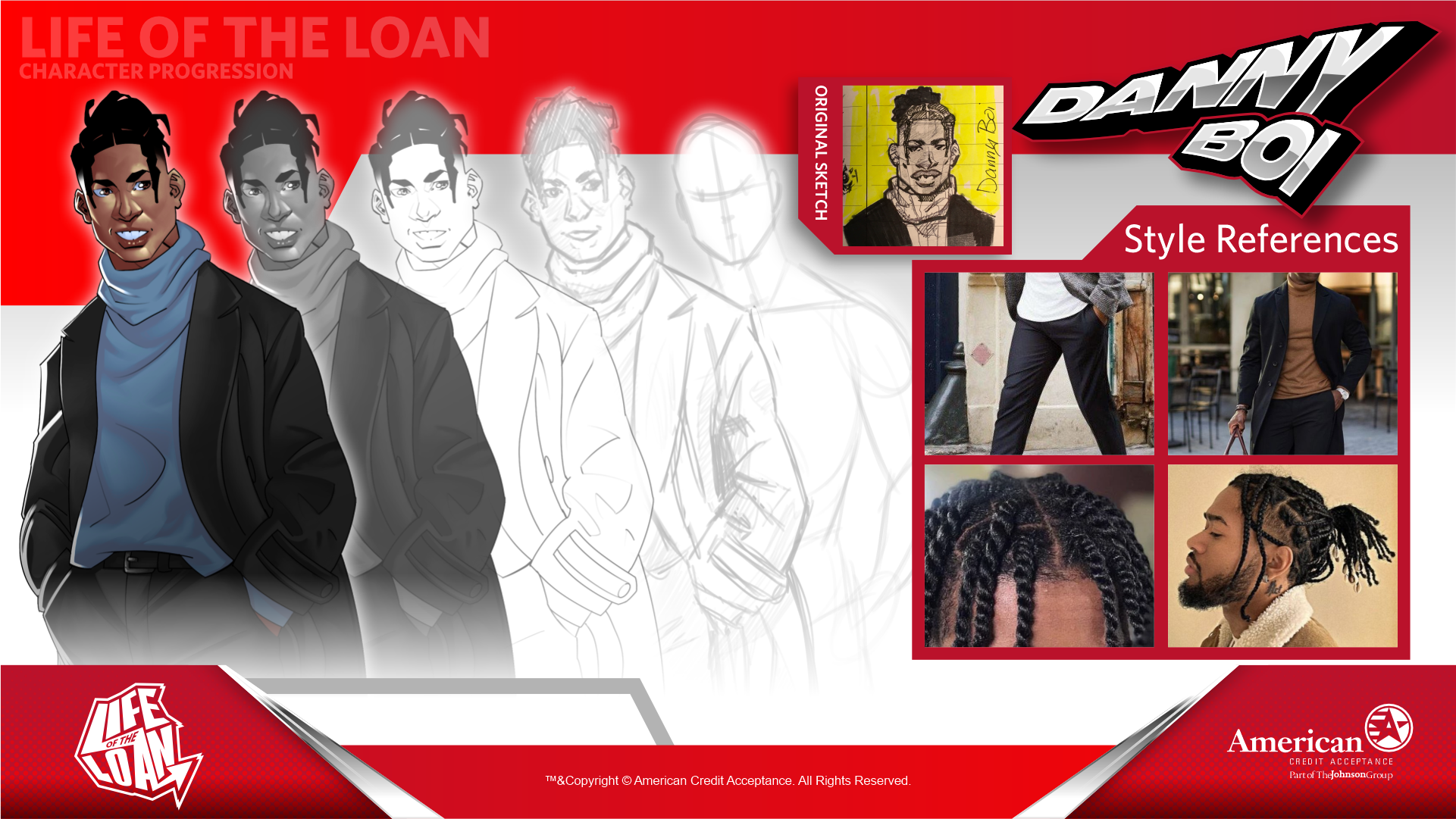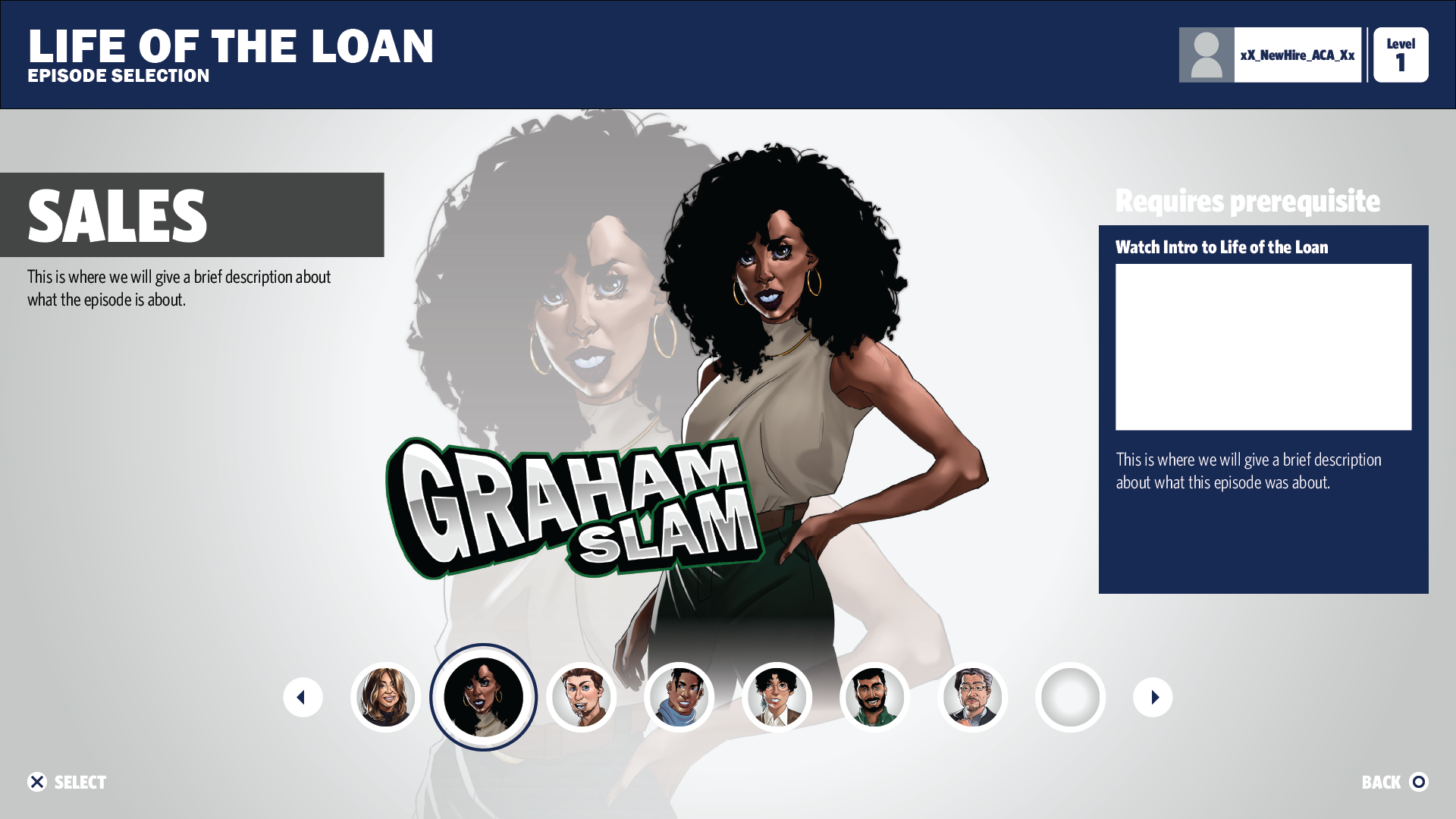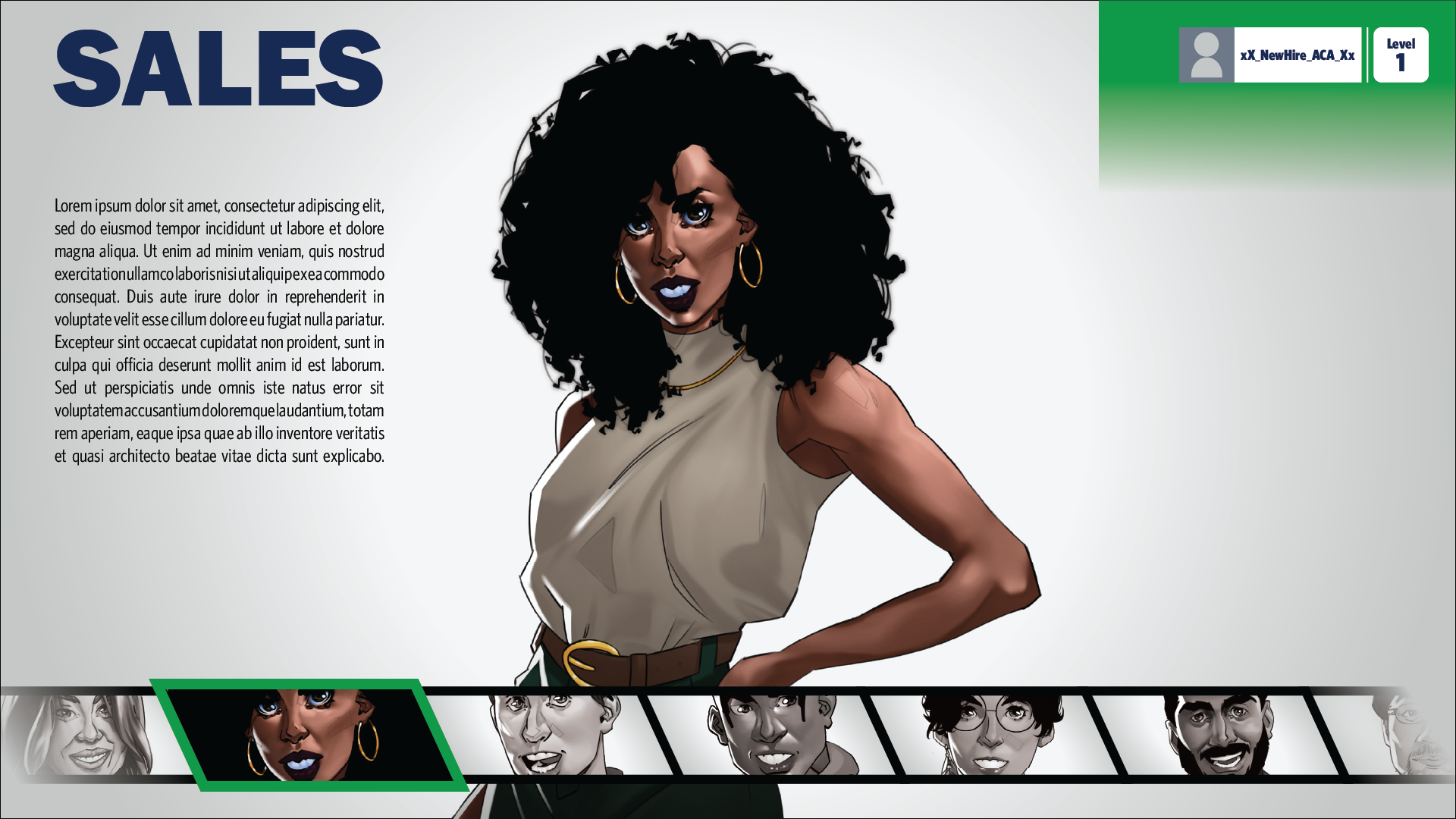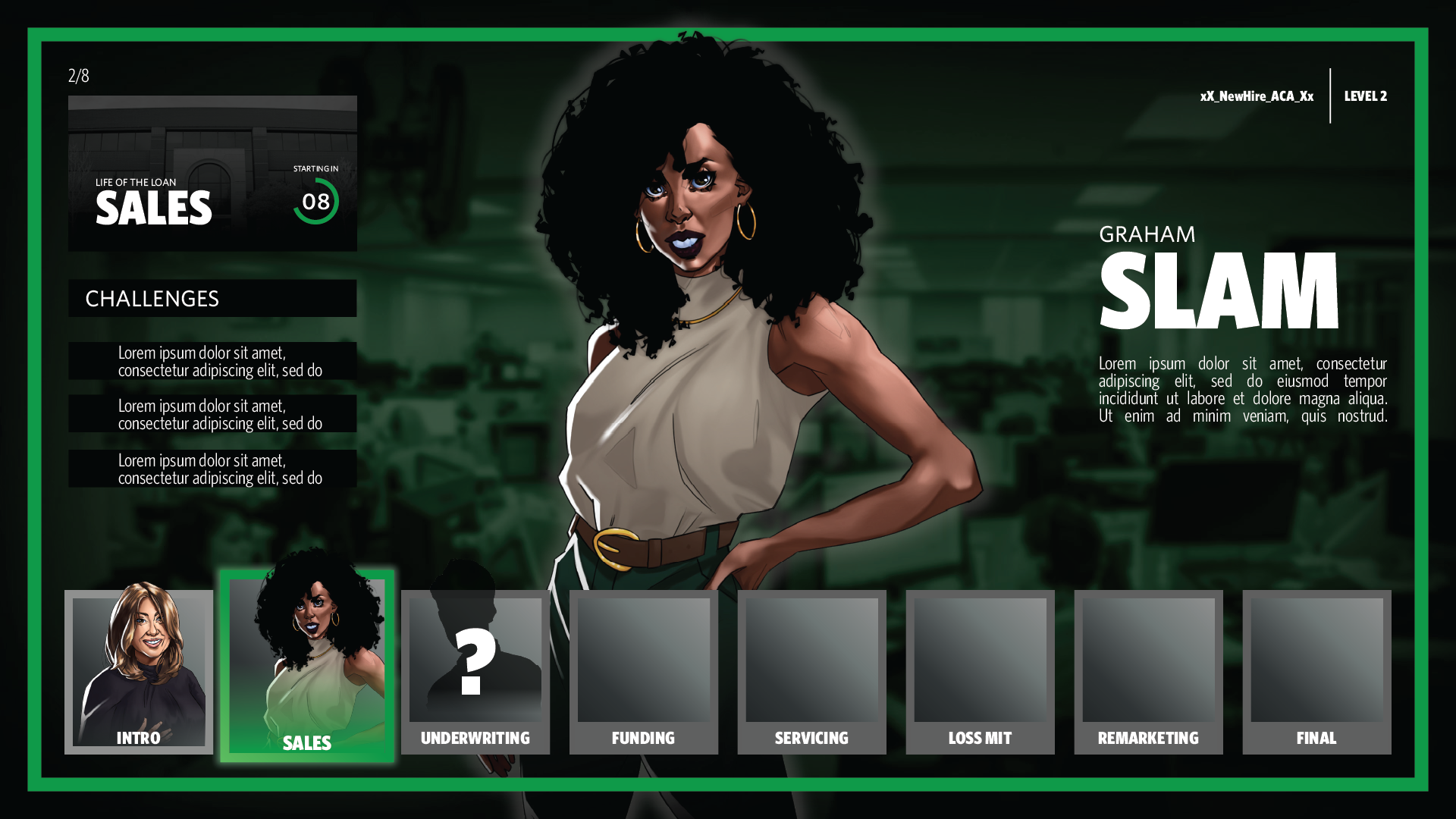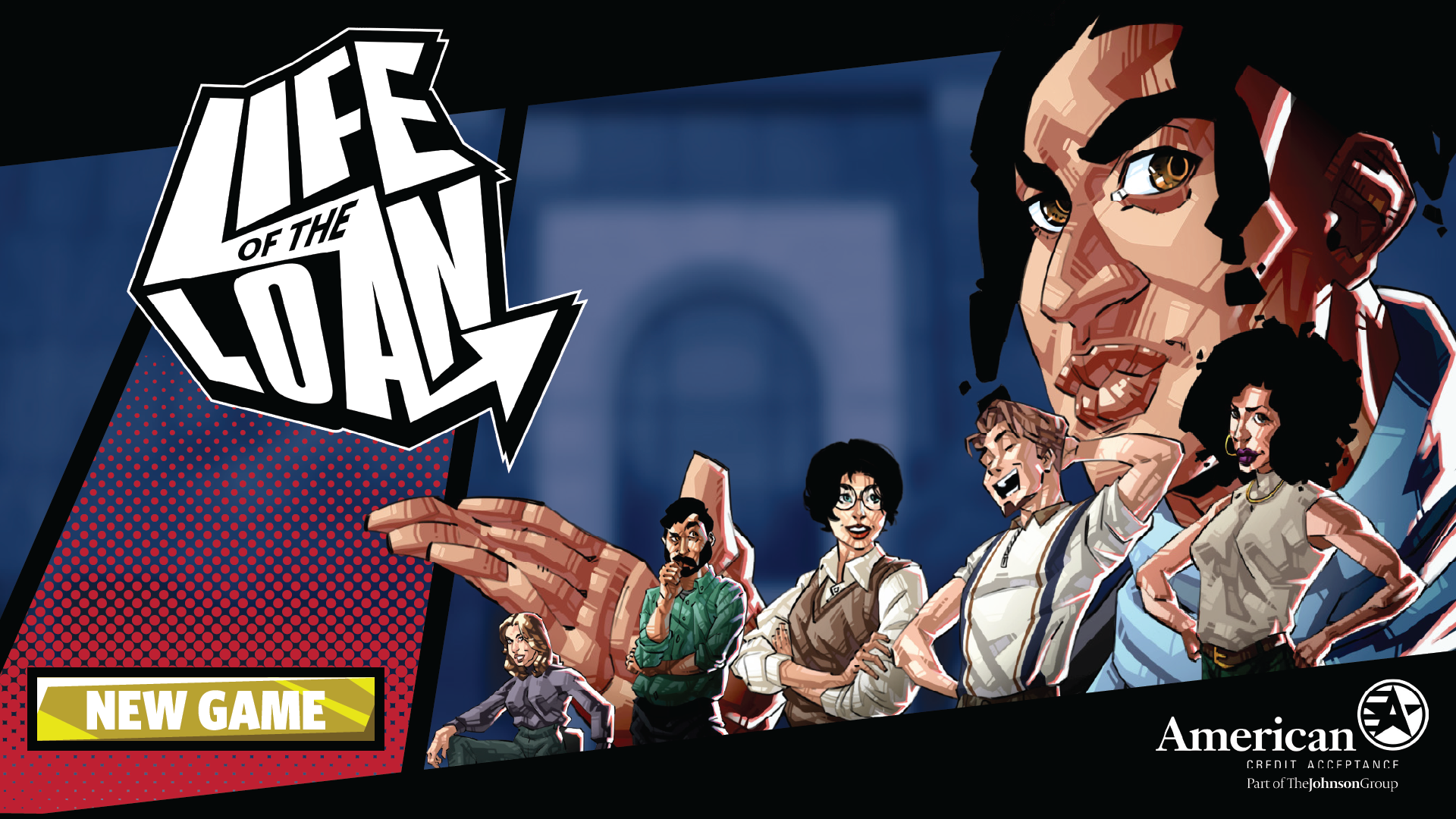
Life of the Loan
The Problem: New hires were stepping into ACA without a clear understanding of how to company operates. The learning curve was steep and onboarding relied heavily on isolated, one-on-one explanations from team leads across multiple departments. That slowed down how fast employees could start contributing and asking the right questions.
The Solution: We created Life of the Loan, a series of short, structured training videos that break down ACA’s business process from start to finish. Each episode gives a high-level overview of a department’s role, how it connects to the rest of the business, and why it matters. This was not meant to be a comprehensive guide on how to do every job in the company. It was meant to create a baseline of understanding for new hires to get up to speed faster, ask better questions earlier, and become productive contributors sooner.
Role: Creative Lead (Animation, Script, Character Designs)
Business Value: $300,000
Finding The Visual Language
Once we clearly defined the problem we were trying to solve, the first priority was defining a clear visual language that could carry the entire series. The content needed to feel approachable, structured, and easy to understand, even for someone walking in with zero context about ACA. This meant developing a consistent set of characters, animations, and transitions that would both guide viewers through the loan lifecycle without overwhelming them with jargon or information as well as have the ability to be consistently and easily replicated throughout each episode. The result was something that I both know and love and felt that our target audience would resonate with: video games.
Character Concept Art
The characters were designed to reflect the environment new hires step into at ACA which is very much collaborative, diverse, and people-driven. The cast includes a wide range of backgrounds and personalities, intentionally crafted to mirror the kind of team members employees will actually work alongside. Each character strikes a balance between being approachable and professional. The designs are clean and neutral enough to stay timeless, but distinct enough to make each role feel clear and memorable. This visual consistency helps create an immediate sense of familiarity for new hires as they learn about each department.
Presentation graphics that were used when presenting to stakeholders
Character Selection Screen Concepts
Crafting The Story
Before I started animating or even storyboarding, I partnered with department heads across the company to understand how each team fit into both the business and the overall loan lifecycle. From those conversations, I wrote the initial script and worked with our curriculum committee to review and standardize the content. Legal also played a key role to ensure everything met regulatory standards. The main goal was to create a unified way of talking about ACA’s process. This meant aligning terminology, clarifying department roles, and building a consistent foundation of knowledge across the company.
Utilizing Storyboards
I use storyboards early in narrative discussions with stakeholders to give them a visual sense of what to expect. This approach lets me get early alignment before any animation work begins, reducing uncertainty about whether the creative direction meets expectations. By securing buy-in up front, we increased efficiency and minimized rework, ensuring everyone was on the same page before I even opened After Effects.
Animating The Episode
Once the script and visuals were approved, I designed all of the graphics in Illustrator and then moved to After Effects to bring the compositions to life. Each sequence was designed to reinforce the narration and keep the pacing clear and engaging for new hires. I focused on smooth, purposeful motion that guided the viewer’s eye without overwhelming the information being shared that also aligned with the rest of the company’s training modules.
All animations were organized and arranged in Premiere, where I blended them with voiceovers and SFX to create a cohesive final narrative. The result was a polished, easy-to-follow training series that turned complex processes into something visual, approachable, and memorable.








